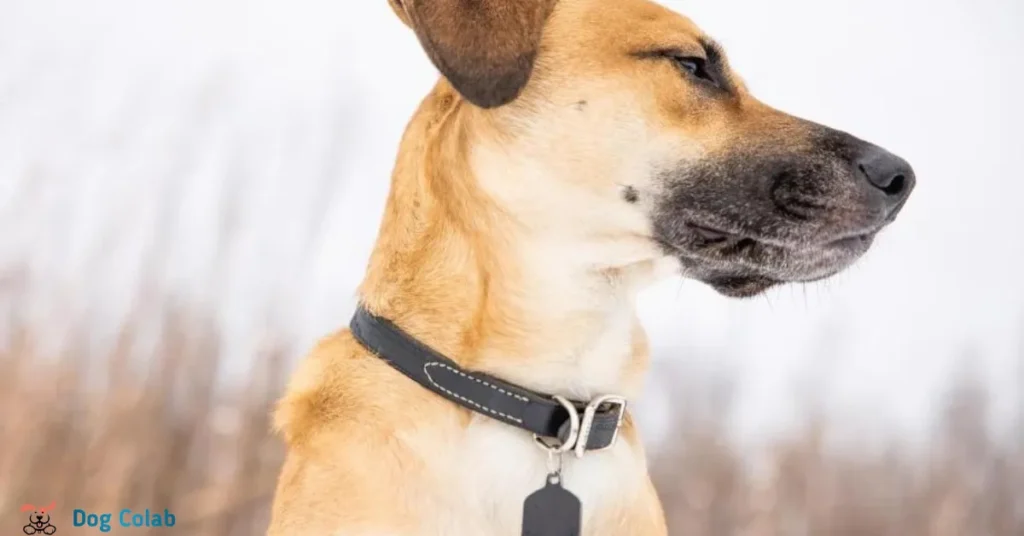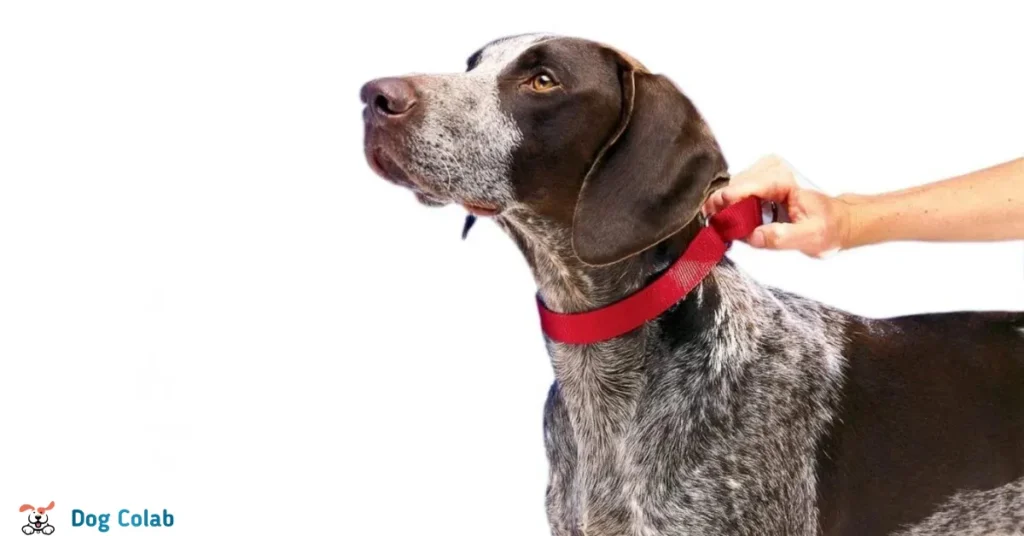Collars are essential accessories for dogs, serving various purposes beyond being a fashion statement. They provide a means to attach identification tags, control and guide the dog during walks, and can be used for training and behavior correction. However, determining how many collars should a dog have largely depends on their individual needs and lifestyle. In this blog post, we will explore the different types of collars and their purposes that help you to make informed decisions about how many collars does a dog need.
Why Do Dogs Need To Wear Collars?
Dogs need to wear collars for various essential reasons, all of which contribute to their safety, identification, and responsible ownership. Here are some of the primary reasons why do dogs need to wear collars.

1. Identification
One of the most crucial reasons for dogs to wear collars is identification. A collar with an attached ID tag containing the dog’s name and the owner’s contact information is an important safety measure. In the unfortunate event that your dog gets lost or wanders away, a clear identification tag greatly increases the likelihood of a safe and quick reunion with their owner.
2. Control During Walks
Collars provide a secure point of attachment for a leash during walks, allowing owners to have better control over their dogs. This ensures that dogs remain close to their owners and helps prevent them from running into hazardous situations or getting lost.
3. Legal Requirements
Many places require dogs to wear collars with identification tags. Licensing and registration regulations may vary by region, but they often mandate that dogs wear collars with up-to-date information, which assists in monitoring and enforcing pet ownership responsibilities.
4. Training Purposes
Collars are used in dog training to reinforce commands and facilitate obedience. Training collars, such as martingale collars, choke chains, prong collars, or remote electronic collars, can be helpful in teaching dogs basic commands and addressing behavioral issues when used appropriately and under professional guidance.
5. Safety Collars
Some collars, like breakaway collars, are designed specifically for safety purposes. Breakaway collars have a safety release mechanism that allows the collar to come undone if it gets caught on an object, reducing the risk of choking or injury to the dog.
6. Medical Information
Specialized collars can hold vital medical information about a dog’s health conditions or allergies. This is particularly useful in emergencies when immediate access to medical information can be crucial for providing appropriate care.
7. Visibility
Collars with reflective materials or LED lights can enhance a dog’s visibility during nighttime walks, making them more visible to drivers and pedestrians and reducing the risk of accidents.
8. Tracking and Monitoring
For dogs prone to wandering or for owners who want to keep a close eye on their pet’s location, GPS tracking collars can be used to monitor their whereabouts in real-time through mobile apps or websites.
Understanding the Different Types of Dog Collars
Understanding the different types of dog collars is essential for responsible pet ownership. Each type serves specific purposes and offers various benefits for your dog’s comfort and safety.

Here are the most common types of dog collars.
1. Flat Collar
This is the standard and most common type of collar. It’s a simple strip of material with a buckle or clip fastening. Flat collars are suitable for everyday use and can hold identification tags. Fabric, nylon, and leather are all common materials for them.
2. Martingale Collar
Also known as a limited-slip collar, the martingale collar is designed for dogs that tend to back out of traditional collars or have necks larger than their heads (e.g., Greyhounds, Whippets). It tightens slightly when the dog pulls, preventing them from slipping out, but it doesn’t choke them.
3. Choke Chain or Slip Collar
This type of collar tightens around the dog’s neck when pulled, which can be harmful if used incorrectly. It is generally not recommended for most dogs, especially those prone to pulling or with respiratory issues.
4. Prong Collar (Pinch Collar)
The prong collar has metal prongs that put pressure on the dog’s neck when pulled. Like choke chains, prong collars can be potentially harmful and are not recommended for most dogs, except under the guidance of a professional dog trainer or behaviorist.
5. Harness
A dog harness is an alternative to collars, especially for dogs prone to neck injuries or those who tend to pull on the leash. It wraps around the dog’s body, distributing the pressure more evenly and avoiding strain on the neck. There are various types, including front-clip, back-clip, and no-pull harnesses.
6. Head Collar (Halti or Gentle Leader)
This type of collar fits over the dog’s muzzle and behind the ears, giving the handler more control over the dog’s head. Head collars can help prevent pulling and are particularly useful for strong or reactive dogs. However, they require proper introduction and training to be effective and comfortable for the dog.
7. Electronic Collar (Shock Collar)
These collars deliver electronic stimulation (shock) to the dog when activated by a remote. They are controversial and should only be used under the guidance of a professional dog trainer experienced in their use.
Factors To Consider When Choosing the Appropriate Collar Type
When choosing the appropriate collar type for your dog, consider the following factors to ensure your pet’s comfort, safety, and well-being.

- Size and Breed: Different breeds and sizes of dogs have different neck shapes and sensitivities. For instance, a Greyhound might benefit from a martingale collar, while a small dog might prefer a lightweight flat collar.
- Temperament and Behavior: Consider your dog’s behavior on walks and interactions with other dogs. If your dog tends to pull, a harness or head collar might be more suitable to avoid neck strain and maintain control.
- Health and Medical Considerations: Dogs with respiratory issues, neck injuries, or certain medical conditions might do better with a harness rather than a collar, as it reduces pressure on the neck and throat.
- Age and Training Level: Puppies and untrained dogs might do well with a flat collar or harness to teach leash manners gradually. More advanced training might warrant the use of specific collars under professional guidance.
- Activity Level: If your dog is highly active or engaged in sports like agility, a well-fitted collar or secure harness is essential to prevent accidental slipping or injury.
- Leash Attachment: Consider where the leash attachment point is on the collar or harness. Front-clip harnesses are good for dogs that pull, while back-clip options might work for well-trained dogs.
- Material and Durability: Choose high-quality collars made from durable materials. Leather and nylon collars are popular choices. Ensure the collar can withstand your dog’s activity level and any outdoor conditions.
- Fit and Adjustability: The collar should fit comfortably around your dog’s neck without being too tight or too loose. Most collars are adjustable, so make sure you can easily adjust them as your dog grows.
- Safety Features: Some collars come with reflective or LED features to enhance visibility during low-light conditions or nighttime walks.
- Training Tools: If considering training collars like prongs or electronic collars, only use them under the guidance of an experienced dog trainer and avoid using them as a punishment tool.
The Importance of Proper Fit and Comfort Collar
The proper fit and comfort of a dog’s collar are crucial for several reasons, and responsible pet owners should prioritize these aspects for their furry companions. Here’s why the right fit and comfort matter when choosing a collar.

- Safety: A properly fitted collar ensures that it won’t slip off or get caught on objects, reducing the risk of accidents or injuries. Collars that are too loose might allow the dog to slip out, while collars that are too tight can cause discomfort, choking, or even damage to the neck.
- Comfort and Well-Being: Just like humans, dogs should feel comfortable in their accessories. A well-fitted collar won’t rub or cause irritation, preventing discomfort and potential skin problems. An uncomfortable collar can lead to behavioral issues or anxiety in dogs.
- Leash Control: A collar that fits well and is comfortable enhances the handler’s control during walks and training sessions. It allows you to guide your dog more effectively without causing pain or discomfort.
- Reduced Escape Risk: A well-fitted collar significantly reduces the chances of your dog escaping or slipping out of it, which is especially important for dogs that may be prone to running off or those in unfamiliar environments.
- No Choking Hazard: Collars that fit properly and comfortably don’t pose a choking hazard, giving you peace of mind when your dog is playing or exploring.
- Support for Training: Comfortable collars make the training process more effective and positive. When a dog feels at ease, they are more receptive to learning and are less likely to associate training sessions with discomfort.
- Preventing Behavioral Problems: Discomfort caused by an ill-fitting collar can lead to behavioral problems like fear, anxiety, and aggression. Ensuring a comfortable collar can help prevent these issues from developing.
To ensure the proper fit of a collar, you should be able to fit two fingers comfortably between the collar and your dog’s neck. Regularly check the collar for signs of wear and adjust it as your dog grows.
You may also be interested in:- What age to put the collar on a puppy and how long it takes to get used to a collar.
Collar Rotation and Hygiene
Collar rotation and hygiene are essential aspects of responsible pet ownership. Regularly rotating your dog’s collar can help prevent skin irritation and discomfort caused by prolonged wear.

Alternating between different collars, especially if your dog spends a lot of time outdoors or in water, allows the collars to dry thoroughly and reduces the risk of bacterial growth.
Additionally, it gives you the opportunity to inspect the collar for any signs of wear or damage, ensuring it remains safe and secure. Hygiene is equally important – regularly cleaning the collar helps remove dirt, oils, and bacteria that can accumulate over time.
Depending on the material, you can hand wash the collar or machine wash the collar or wipe down the collar with cleaning solutions. Proper collar rotation and hygiene not only keep your dog comfortable but also contribute to its overall health and well-being.
How Many Collars Should A Dog Have?
Ideally, a dog should have at least two collars for different purposes and situations. The first collar is a comfortable and well-fitted everyday collar that holds the dog’s identification tags and allows for leash attachment during regular walks and outings. This collar should be made of durable materials and should fit properly to ensure the dog’s safety, comfort, and proper control during walks.

The second collar could be a specialized collar, such as a harness or a head collar, designed to address specific behavioral or medical needs. For instance, a harness might be used for dogs that tend to pull on the leash, while a head collar might be suitable for dogs that need extra control during walks.
Having multiple collars allows owners to switch between them based on the dog’s activity, training, and individual requirements, ensuring the pet’s overall well-being and safety.
How Many Collars Should Be Around Your Dog’s Neck?
The number of collars that should be around your dog’s neck depends on the specific purpose and needs of your pet. Generally, dogs wear one collar for everyday use, which holds their identification tags and can be used for leash attachment during walks. However, in certain situations, you might consider using additional collars.

For training purposes, you might use a training collar, such as a martingale or slip collar, which should only be used under supervision and not left on for extended periods. For dogs with specific medical conditions or behavioral issues, a medical collar like an Elizabethan collar may be required temporarily.
Conclusion “How Many Collars Should A Dog Have”
The number of how many collars should a dog have depends on its specific needs and lifestyle. Every dog should have an identification collar for safety reasons, and an everyday collar for daily use. Training collars should be used with care and only under professional guidance.
Safety collars are meant for specific situations, and GPS tracking collars can be useful for owners concerned about their dog’s location. Always consider your dog’s comfort and safety when choosing and using collars.
NOTE:- More information can be found by clicking this link.
FAQs
1. Can a dog wear 2 collars?
Yes, a dog can wear two collars as long as they are properly fitted and not too tight. However, it’s essential to monitor for comfort and safety.
2. What are the 3 basic types of collar?
Flat collars, standing collars, and rolled collars are the three basic types. Each style offers different looks and functionalities.
3. What is the most common collar?
The most common collar is the point collar, known for its traditional style with narrow points (1.5″ – 3.5″) that meet the lapels on both sides.

